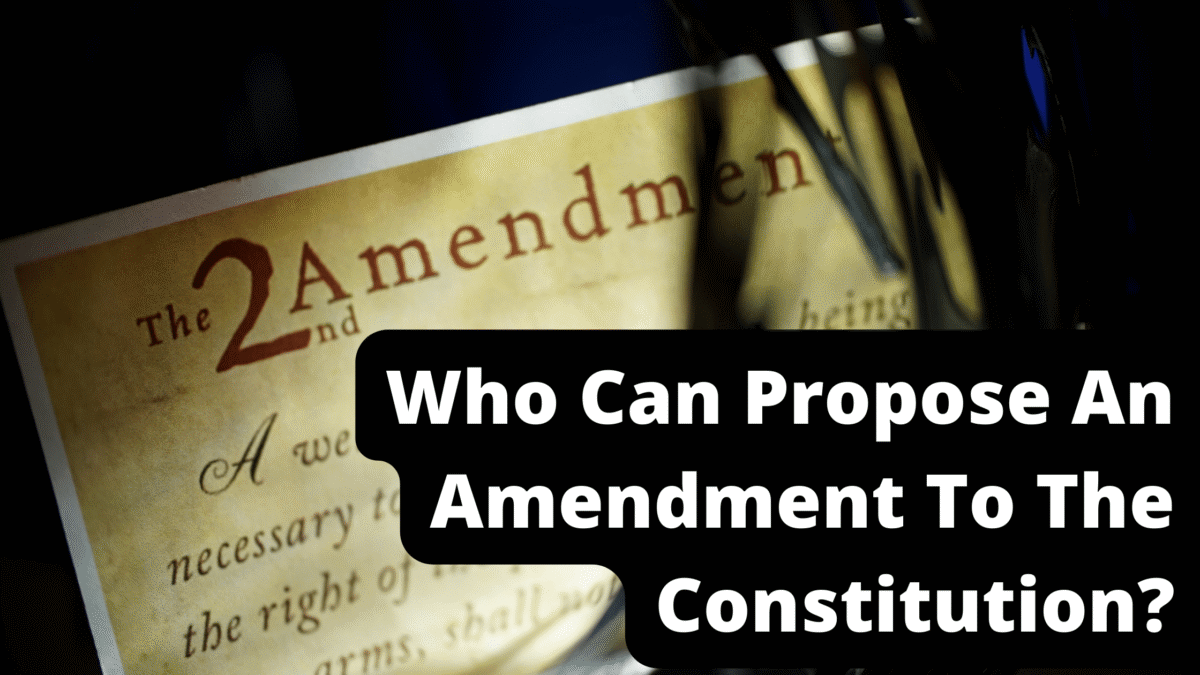How Many US Constitutional Amendments are There?
The authors of the United States Constitution wanted to create a document that would stand the test of time. Article V of the Constitution defines a procedure for modifying it. These modifications are called “amendments.”
Since 1789, when the constitution became the law of the United States, the constitution has been successfully amended 27 times. Six amendments have been proposed but not ratified, bringing the total number of amendments to the constitution to 33.
The constitution was first amended in 1791 when 10 amendments known as the Bill of Rights were added that explicitly protected the population from certain laws and government actions. The most recent constitutional amendment to be ratified, the 27th amendment, was proposed at the same time as the Bill of Rights in 1789. It was ratified in 1992. Before the ratification of the 27th amendment, the 26th amendment was proposed and ratified in 1971.
Creating an Amendment
There are two steps to amend the United States Constitution. First, the federal government must agree on the text of the proposed amendment. This is done via a vote in both the House of Representatives and the Senate, requiring a 2/3rds majority in both chambers to pass. Alternatively, the amendment may be created via a special national convention called forth by state legislatures and created by Congress. The first method has been used with all 27 successful amendments.

Get Smarter on US News, History, and the Constitution
Join the thousands of fellow patriots who rely on our 5-minute newsletter to stay informed on the key events and trends that shaped our nation's past and continue to shape its present.

The amendment process requires that it must become ratified once the amendment has been written. There are two paths to ratification. The first requires three-quarters of state legislatures to approve of ratifying the amendment. This method has been used with all but one of the 27 current amendments. The second method requires states to create special ratifying conventions. When three-quarters of these conventions approve of ratifying an amendment, the amendment is added to the constitution. Only one amendment, the 21st amendment, has used this method of ratification.
Unratified Amendments
There’s no time limit for the ratification process. The 27th amendment was proposed in 1791, failed to get the required ratifications, and was largely forgotten until 1982 when a college student launched a campaign to finish the ratification process and add the amendment to the Constitution. Of the six unratified amendments, four are “live,” meaning the states could ratify them at any time, one has language that requires it to be ratified by a certain date, which has passed, and one is the subject of legal controversy.
Ratified Amendments
The Bill of Rights
The first 10 amendments, the Bill of Rights, were proposed immediately following the adoption of the Constitution. The Constitution was not without its opponents, and those opponents raised several arguments against adopting the document prior to 1789. James Madison, one of the architects of the Constitution, created 12 amendments to deal with these arguments. Articles 3-12 of his proposals were ratified as amendments in 1791. Article 2 was ratified in 1992, and Article 1 is still unratified.

The Bill of Rights outlines protections of the people against laws and government actions. It includes the right to bear arms, freedom of religion, freedom of speech, the right to a speedy trial, a prohibition on unreasonable searches, and bans cruel and unusual punishment. The 9th amendment protects rights that aren’t listed explicitly in the constitution, while the 10th gives all powers not expressly granted to the federal government to the States.
Amendments Concerning Voting, Elections, and Governmental Officials
The 12th amendment, ratified in 1804, changes how the vice president is elected. Before this amendment, the vice president was simply the runner-up of the race for president. After this amendment, presidents and vice presidents ran together.
The 15th amendment, ratified in 1870, makes it illegal to deny voting rights based on race, color, or former slavery.
The 17th amendment, ratified in 1913, changed the election of federal Senators. Prior to this amendment, they were elected by state legislators. This amendment requires them to be directly elected by the people.
The 19th amendment, ratified in 1920, made it illegal to deny voting rights based on sex.
The 20th amendment, ratified in 1933, changed when certain elected federal officials take office. It also makes the Vice-President Elect the President-Elect if the President-Elect dies before being inaugurated.
The 22nd amendment, ratified in 1951, adds a term limit to the office of the president.
The 23rd amendment, ratified in 1961, gives the District of Columbia electors in a presidential election.
The 24th amendment, ratified in 1961, makes it illegal to deny voting rights based on any tax, including a poll tax.
The 25th amendment, ratified in 1967, defines who becomes president in the event that something happens to both the president and the vice-president. It also outlines procedures to deal with the president becoming unfit for office.
The 26th amendment, ratified in 1971, makes it illegal to deny voting rights based on age for people over 18.
Other Amendments
The 11th amendment, ratified in 1795, limits who can bring lawsuits against states.
The 13th amendment, ratified in 1865, makes slavery illegal.
The 14th amendment, ratified in 1868, contains some of the most critical legal clauses in the constitution. For decades, the “due process” and “equal protection” clauses in this amendment have been cornerstones of American law.
The 16th amendment, ratified in 1913, makes federal income tax legal.

The 18th amendment, ratified in 1919, made it illegal to produce or sell alcohol in the US. The 21st amendment, ratified in 1933, repealed this amendment.
The 21st amendment, ratified in 1933, repeals the 18th amendment. It also protects the right of states to ban liquor.
The 27th amendment, ratified in 1992, ensures that any laws regarding congressional representatives’ compensation only come into force after the next election cycle.





2 Responses
Question : Have there been new amendments since the first where. We would like to know or are they on their way to create new amendments?
Is there a group that works on amendments?